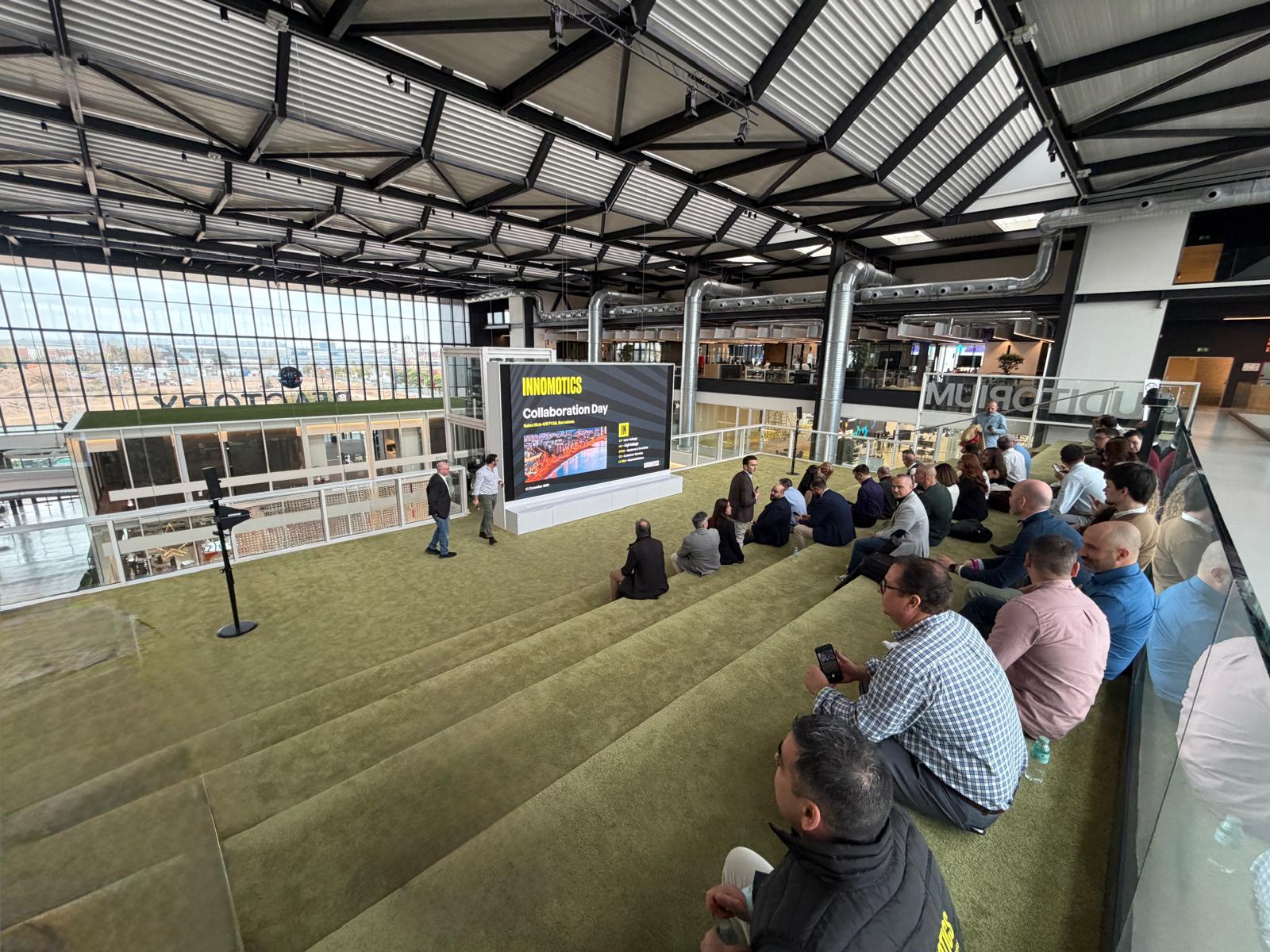Quick Response to Urgent Breakdowns: Emergency Protocol
An alarm sounds. A red light flashes on the control panel. The main production line, the heart of the plant, comes to a sudden stop. In that instant, a race against time ensues where every second of inactivity translates into financial losses, stress, and risk. Amidst this chaos, the difference between a recovery in minutes and a disaster lasting several hours does not depend on luck, but on one single thing: having a robust, clear, and rehearsed emergency protocol.
Many consider breakdowns as unpredictable events, but the response to them should never be. This article is a guide to abandon improvisation and build a emergency response protocol that transforms panic into orchestrated procedure, protecting your team, your production, and your profitability.
The Real Cost of Chaos: Beyond Downtime
When a critical machine fails, the first calculation is the downtime. But the true impact is much deeper. An improvised and chaotic response generates cascading costs:
Cost of idled personnel: Operators, technicians, and supervisors who cannot perform their work but remain on the payroll.
Contractual penalties: Delivery delays that can lead to fines and, worse yet, a loss of customer trust.
Safety risks: Haste and lack of a clear plan drastically increase the likelihood of workplace accidents during repairs.
Damage to team morale: A constantly crisis-driven environment generates stress, frustration, and a reactive culture that "burns out" the best talent.
The 5 Pillars of an Effective Emergency Response Protocol
To bring order to chaos, an effective industrial contingency plan is built on five logical phases that form a complete crisis management cycle. It is not just about repairing, but about detecting, assessing, acting, resolving, and learning.

PHASE 1: Detection and Immediate Alert
You cannot solve a problem that you do not know about. The speed of detection is the first critical factor.
The Transition from Manual to Automatic Alert (SCADA, HMI, IoT)
The old method, where an operator "hears a strange noise," is slow and subjective. Industry 4.0 allows us to move to an automatic model. An abnormal vibration alert in the SCADA system, a temperature spike detected by an IoT sensor, or an overcurrent alarm on the HMI are instant, precise, and data-driven notifications that gain vital minutes.
Defining the Threshold: When Does an Alert Become an Emergency?
Having too many irrelevant alerts ("alarm fatigue") is just as dangerous as having none at all. The protocol must precisely define the thresholds that turn a simple notification into an emergency. Is a vibration of 5 mm/s a warning, but a 7 mm/s vibration an emergency stop? This pre-configuration is key for the system to work for you and not against you.
The Emergency Communication Channel: Who and How is Notified?
Once the emergency threshold is crossed, the notification must be fail-proof. The protocol must specify the channel: Does an automatic SMS go to the on-duty maintenance manager? Is a sound and visual alarm activated on the plant? Do supervisors receive a push notification on a mobile app? The method must be direct, immediate, and leave no room for doubt.
PHASE 2: Assessment and Triage of the Breakdown
The alert has arrived. Now it is time to quickly understand what we are facing.
Creating a Quick Decision Tree
The first technician to arrive at the machine must be able to assess the situation in a structured way. A simple decision tree is the perfect tool. With closed questions, it guides the staff:
Is there an immediate risk to the safety of people (fire, chemical leak, etc.)? → YES: Activate safety and evacuation protocol. → NO: Proceed to the next question.
Does the breakdown affect a critical machine or the main line? → YES: Classify as Level 1. → NO: Proceed to the next question.
Roles and Responsibilities: Who Leads the Response?
In a crisis, anarchy is the worst enemy. It is essential to designate a "Response Leader" or "Incident Commander" for each shift. This person, usually the maintenance manager or a senior supervisor, is the final authority who makes critical decisions, avoiding contradictory orders.
Threat Classification: Level 1 (Critical), Level 2 (Serious), Level 3 (Minor)
For the entire organization to speak the same language, the protocol must include a threat classification system:
Level 1 (Critical): Total shutdown of a main line or safety risk. Requires an immediate response from all necessary resources.
Level 2 (Serious): Significantly affects production but can be contained or does not pose a safety risk. Requires an urgent response.
Level 3 (Minor): A failure that does not stop production and whose repair can be scheduled.
PHASE 3: The Immediate Action Plan
With the breakdown evaluated and classified, the plan for emergency corrective maintenance is executed.
Safety Protocols First: Lock-Out/Tag-Out (LOTO)
No repair justifies an accident. The first step of any physical intervention is to rigorously apply the industrial maintenance safety procedures (LOTO). Locking out the machine, blocking energy sources, and properly labeling it is non-negotiable.
Mobilization of the Correct Response Team (Mechanical, Electrical, Instrumentation)
The protocol must be an intelligent guide. If the alarm is "Variable speed drive communication failure," the system must indicate "Contact Electrical/Instrumentation." If it is "High vibration on motor," it must indicate "Contact Mechanical." This avoids wasting time on unnecessary calls.
Instant Access to Technical Documentation (Diagrams, Manuals, History)
Imagine your technician, in front of the broken machine, accessing electrical diagrams, the manufacturer's manual, and the repair history of that asset from a tablet. This is possible thanks to a good Maintenance Management System (CMMS/GMAO) and exponentially speeds up diagnosis.
Communication with the Production Department
The maintenance team must inform the production team. The protocol should establish that within the first 15 minutes, the Response Leader must communicate an initial estimate of downtime. This fluid communication manages expectations and reduces friction between departments.
PHASE 4: Solution, Verification, and Restart
The goal is to return to normality safely and reliably.
The Importance of a Well-Managed Inventory of Critical Spare Parts
The best technical team in the world cannot do anything without the right spare parts. Good asset management ensures that critical components (bearings, fuses, contactors, etc.) are available, located, and ready for use, preventing a 30-minute repair from turning into a 3-day wait.
Post-Repair Testing Procedures
Once the part is replaced, the repair is not finished. It is vital to follow a verification procedure: start the machine in idle, monitor temperatures and vibrations, and check that all parameters return to normal before giving the green light.
Safe Production Restart Protocol
The restart must be as orderly as the shutdown. The protocol defines the sequence for re-energizing systems and resuming production gradually and safely, ensuring that all operators are in their positions and away from risk areas.
PHASE 5: The Post-Incident Analysis
Production is up and running again, but the most important work has just begun.
Root Cause Analysis (RCA): Why Repairing is Not Enough
"We fixed the bearing." But why did it fail? A Root Cause Analysis (RCA), using techniques such as the "5 Whys," forces us to dig deeper to find the real source of the problem (e.g., misalignment, lubrication error, design issue). Solving the root cause is the only way to ensure that the breakdown does not recur.
Updating the Protocol and Preventive Maintenance Plans
Every incident is an opportunity to improve industrial reliability. If the breakdown was due to predictable wear, the preventive maintenance plan needs to be adjusted. If communication failed during the response, that part of the protocol needs to be updated.
The Lessons Learned Meeting
Fostering a culture of continuous improvement involves bringing together the involved team (without looking for blame) to analyze what was done well, what could have been done better, and what was learned from the incident.
Technology as a Catalyst for Quick Response
Modern technology can enhance every phase of this protocol:
Maintenance Management Systems (GMAO/CMMS)
They act as the central brain, storing breakdown histories, managing work orders, controlling spare parts inventory, and providing mobile access to all technical documentation.
Augmented Reality for Remote Assistance
A technician in the plant can use Augmented Reality glasses to show in real-time what they see to an expert or the manufacturer anywhere in the world. This person can guide them through the repair by overlaying instructions or diagrams in their field of vision, drastically speeding up diagnosis and resolution.
Is Your Response Plan a Draft or a Guarantee?
Now, an honest question: Is your emergency protocol a document kept in a drawer or a living, dynamic system? Has your team practiced it? Does everyone know their exact role when the alarm sounds?
A protocol that is not practiced is just a theory. To be a guarantee of effective production downtime management, it must be known, accessible, and periodically audited.
Conclusion: From Chaotic Reaction to Orchestrated Response
Urgent breakdowns are inevitable, but how your organization responds to them is under your control. Implementing a detailed emergency protocol supported by the right technology transforms a group of reactive individuals into a coordinated and efficient team.
Stopping putting out fires to start methodically managing incidents is not an expense; it is a direct investment in the safety of your personnel, the reliability of your assets, and the profitability of your business.



